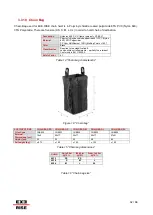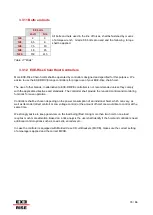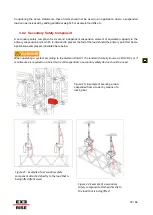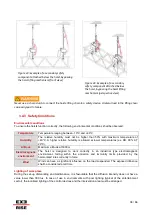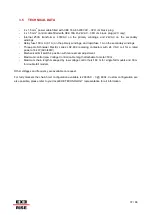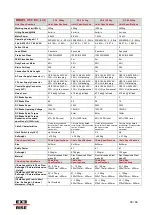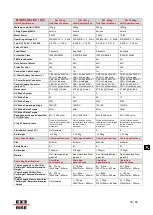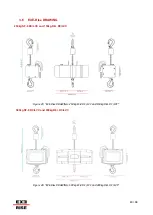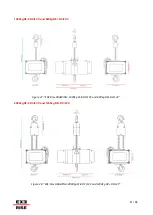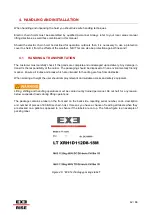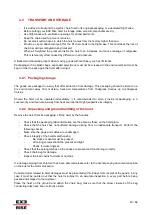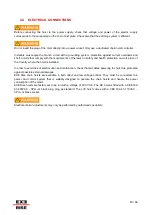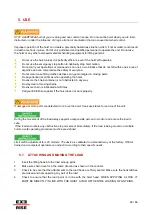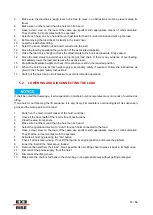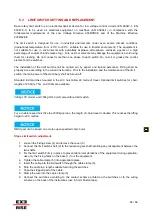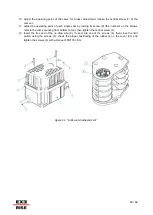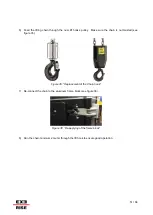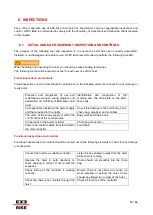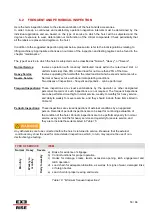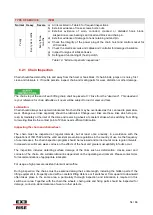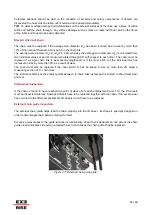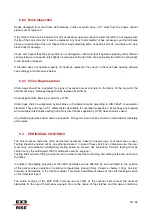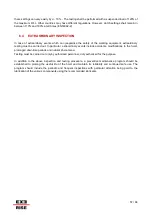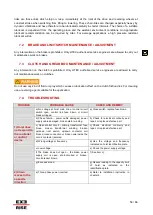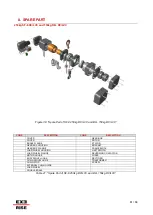
46 / 66
5. USE
STAY ALERT! Watch what you are doing and use common sense. Do not use the hoist when you are tired,
distracted or under the influence of drugs, alcohol or medication that can cause diminished control.
Improper operation of the hoist can create a potentially hazardous situation which, if not avoided, could result
in death or serious injuries. Permit only authorised and qualified personnel to operate the unit. Do not use
the hoist or any other overhead materials handling equipment for lifting persons.
Do not use the hoist unless it is perfectly efficient, even if the hoist still operates.
Do not use the emergency stop button to habitually stop hoist motion.
Do not carry out operations or manoeuvres on
one’s own initiative that do not fall within one’s area of
expertise and can compromise the safety of everyone.
Do not wear loose fitting clothes as these can get entangled in moving parts.
Do pay attention at all times when operating the hoist.
Do ensure the chain container is not obstructed in any way.
Do stay clear of moving chains.
Do ensure chain is lubricated at all times.
Call your EXE Rise supplier if the hoist does not work properly.
If damaged or worn parts are detected do not use the hoist. Seek assistance for service of the unit.
During the movement of the load always appoint a responsible person to monitor and ensure the load is
safe.
If the load encounters any obstruction stop movement immediately. If the load is being moved on multiple
hoists a safe operating procedure must be pre-defined.
Limit switch adjustment for LVC models: The device is calibrated in a standard way at the factory. Official
trained and competent operators can adjust it according to their specific needs.
5.1
ATTACHING AND MOVING THE LOAD
1.
Insert the lifting hook into the load pick-up point.
2.
Make sure chain travel is in the same direction as shown on the controls.
3.
Check to be sure that the attachments to the load hook are firmly seated. Make sure the hook latches
are closed and not supporting any part of the load.
4.
Check to ensure that the load point is in line with the hoist head. WHEN APPLYING A LOAD, IT
MUST BE DIRECTLY IN LINE WITH THE HOIST. AVOID OFF CENTRE LOADING OF ANY KIND.

